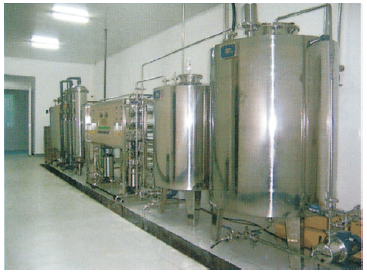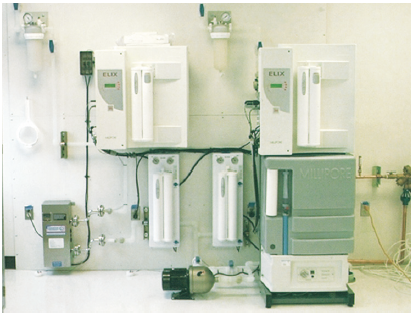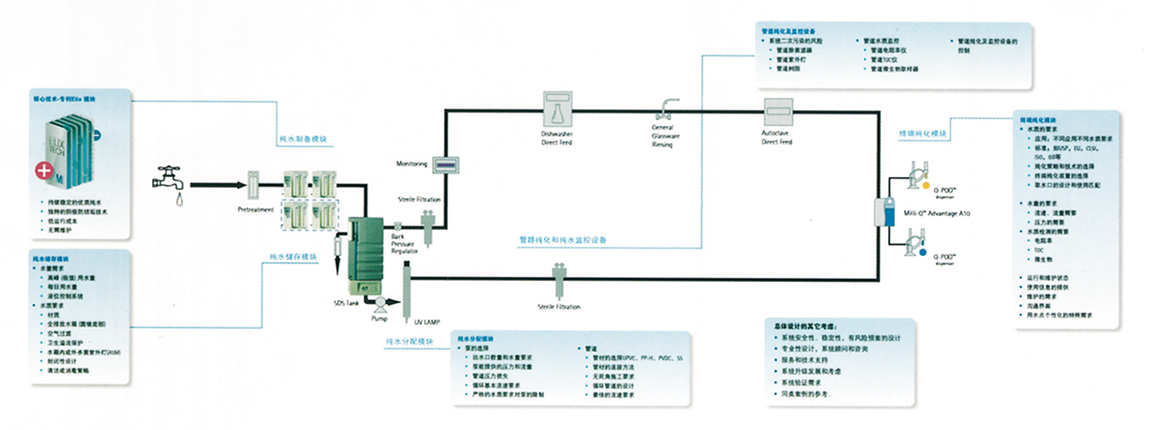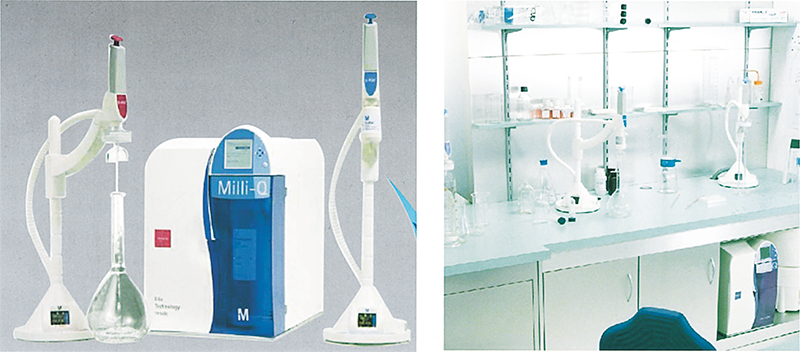In the laboratory,the generalcity water cannot meet theexperiment’ s need, for example: during the life science research, it is quitesensitive to the pollutants, especially for the heavy metal and solutibleorganism. For this reason, there are several professional organizations likeACS、ASTM、NCCLS、USP create the standards。 For ur part, we use the NCCLS standard to divide the water intoTypel、Ill and special-use water.

Type Ⅰ: The test which needsthe minimum interfering and the maximum purity and precision, such as atomic absorption and trace element analysis.
Type Ⅱ: lt can bear some bacterial, such as normal liquids which cannot be kept.
Type Ⅲ: Some washing-use water; Makingthe high-purity water and making the bacterial-using water.
Special water: During the process it is needed to get rid of the special pollutant such as eliminating the hot resources fromtexture/bacterial, and in HPLC,eliminating the trace elements.
1. Particles: including gravel, pieces from pumps etc which can lam valve, the membrane filter, pipeline and reverseosmosis membrane, etc. Generally using the filter, microscope methods can be detected.
2. Water soluble minerals: The materials which can let the water become stifening such as Ca, Mg, Si , CO2, N, P andother substances. Test method generally uses the resistivity and electric conductivity coefficient.
3. Soluble organic matter: such as, herbicide, pesticide, aerosol, plant and animal tissue corrosion.
4. Microbial: the surface of the water there are all kinds of microbes, including bacteria, the original biological, algae, etc.
Flow Chart of Ultra Pure Water System

Water Standard

Analysis Laboratory StandardGB6682-92(water)
Electronic LevelUltra Pure Water Chinese National Standard (GB/T11446.1-1997)
China Pharmacopoeia Medicine WaterStandards
Boiler Water Supply Quality Standards
The United States and ASAlOBlood Dialysis Water AAMI Water Quality Standard
TheUnited States Tests and MaterialTest (ASTM), ClinicalTest Standard lnternational Commission (NCCLS), Water QualityStandard of the American Clinical Pathology CAP
Bottled Drinking Pure Water Standard(GB173231998)
Bottled Drinking Pure WaterHygiene Standards(GB17324-1998)
Drinking Natural Mineral Water Standard(GB8537-1995)
Potable Water Quality Standard(gb5749-85)
分析实验室用水标准(GB6682-92)
| 指标名称 | 一级 | 二级 | 三级 | |
| PH值范围(25°C) | - | - | 5.0~7.5 | |
电导率 (25°C ) | Ms/m≤ | 0.01 | 0.1 | 0.5 |
| Us/cm≤ | 0.1 | 1 | 5 | |
| 比电阻MΩ.cm@25°C > | 10 | 1 | 0.2 | |
| 可氧化物[以O计]mg/L | - | 0.08 | 0.40 | |
| 吸光度(254nm,1cm光程)≤ | 0.001 | 0.01 | - | |
| 二氧化硅(mg/L) | 0.02 | 0.05 | - | |
| 蒸发残渣(mg/L) | - | 1.0 | 2.0 | |
中国药典医药用水标准-纯化水标准
| 氨 | <0.3ppm |
| 硝酸盐 | <0.06ppm |
| 重金属 | <0.5ppm |
| 电导率 | <2 μs/cm |
注射水标准
| PH值 | 5.0~7.0 |
| 氨 | <0.2ppm |
| 硝酸盐 | <0.06ppm |
| 细菌内毒素 | <0.25EU/ml |
| 重金属 | <0.5ppm |
电子级超级纯水中国国家标准(GB/T11446.1-1997)
| 项目级别 | 比电阻 | 硅≤ | >1μm微粒数 | 细菌个数 | 铜≤ | 锌≤ | 镍 |
| MΩ.cm@25°C | μg/L | <?个/mL | <?个/mL | μg/L | μg/L | ≤μg/L | |
| EW-I | 18 ( 95%的时间不低于17 ) | 2 | 0.1 | 0.001 | 0.2 | 0.2 | 0.1 |
| EW-II | 15 ( 95%的时间不低于13 ) | 10 | 5 | 0.1 | 1 | 1 | 1 |
| 项目级别 | 钠 ≤μg/L | 钾≤μg/L | 氧≤μg/L | 硫酸根≤μg/L | 硫酸根≤μg/L | 硫酸根≤μg/L | 总有机碳≤μg/L |
| EW-I | 0.5 | 0.5 | 1 | 1 | 1 | 1 | 20 |
| EW-II | 2 | 2 | 1 | 1 | 1 | 1 | 100 |
Large Water Purification System Customized Solutions

The MHIi-Q® Integral System
The Milli-Q® Integral system provide a compact solution that combines the production of Type 2 (pure) water and Type 1 (ultrapure) water in a single unit —eliminating the need for a pretreatment stage upstream of the ultrapure water system. The system uses regular tap water as feed, and produces pure and ultrapure water delivered by independent POD dispensers.
Additional purification steps provide ultrapure water with 18.2 MΩcm @25℃ resistivity that can be“fine-tuned” even further to remove specific types of contaminants. With the appropriate Application Pak point-of-use polisher in place,the Milli-Q® Integral system will provide water suitable for HPLC,LC-MS, MALDI-TOF-MS,IC, ICP, AA and most of the analytical techniques commonly used in the laboratory. Application Paks can be easily connected to POD dispensers,letting you match your water quality to your specific research and applications.

